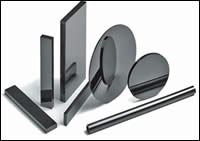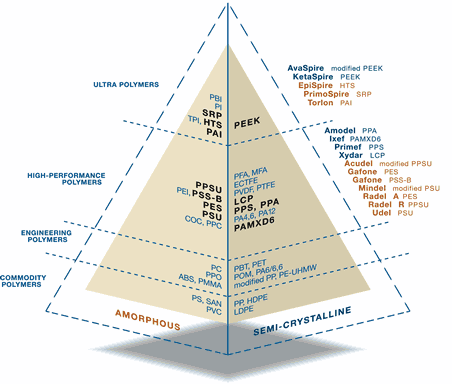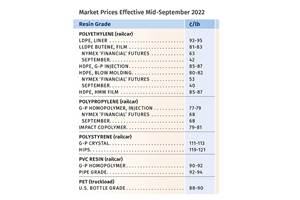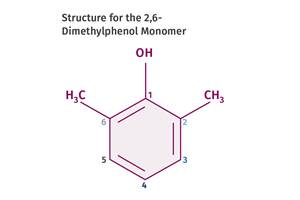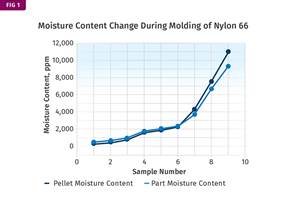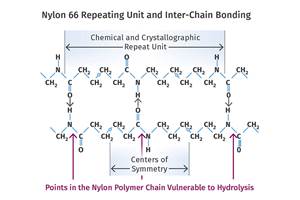New 'Ultra' Thermoplastics Contend for Top of Performance Pyramid
The industry’s broadest line of highly heat- and chemical-resistant thermoplastics is being fortified with several new amorphous and crystalline materials in the so-called “ultra-performance” category.
The industry’s broadest line of highly heat- and chemical-resistant thermoplastics is being fortified with several new amorphous and crystalline materials in the so-called “ultra-performance” category. According to Solvay Advanced Polymers, Alpharetta, Ga., market demand for lighter, tougher alternatives to metals, ceramics, and thermoset composites is driving development of new options at the top tier of the resin performance pyramid. Such “ultra” polymers are experiencing 15% annual demand growth, according to Solvay.
Its new SolvaSpire family of materials is said to be the largest portfolio of “ultra” polymers in the industry. There are five products in this family:
- New KetaSpire PEEK, a drop-in replacement for Victrex PEEK.
- New AvaSpire modified PEEK, a lower-cost version with somewhat lower properties.
- PrimoSpire self-reinforced polyphenylene (SRP), a novel amorphous resin.
- New EpiSpire high-temperature sulfone (HTS).
- Solvay’s existing Torlon polyamide-imide (PAI).
Solvay is competing with a handful of suppliers that offer one polymer apiece in this category: Victrex USA Inc., the originator of PEEK; Degussa High Performance Polymers, also introducing PEEK (see sidebar); Mitsui Chemicals America with a thermoplastic polyimide; and most recently, GE Plastics with a new TP polyimide of its own. Thermoset polyimides (PI), like DuPont’s Kapton film and Vespel shapes, also compete in this market area.
New options in PEEK
New KetaSpire PEEK is based on the same technology used to manufacture Victrex PEEK. Considered a drop-in replacement for Victrex, KetaSpire comes as powder or pellets. The crystalline material boasts a glass-transition temperature (Tg) of 148 C, HDT of 315 C, and continuous-use temperature up to 240 C. Two unreinforced grades have an HDT of 162 C. Other key features include strong chemical resistance to organic solvents, acids, and bases and excellent fatigue resistance and wear resistance. The eight grades include ones with 30% glass or carbon fiber. Neat grades range in melt flow from 3 to 36 grams/10 min at 400 C–reportedly similar to the flow range of Victrex PEEK. Application areas include chemical processing, medical sterilization, electronics, and semiconductors.
KetaSpire PEEK is different from the Gatone PEEK line that Solvay acquired in 2006 with its purchase of Gharda Polymers in India. Those are made by a different process that results in darker color and different processability. Solvay will continue to offer Gatone, primarily in Asia, but will discontinue its own Kadel PEEK products.
More tailored PEEK materials that meet specific application requirements are being introduced under the AvaSpire banner. These are said to fill a price/performance gap because they cost as much as 15% less than standard PEEK. They provide high toughness and temperature resistance although there is a compromise in chemical resistance and strength, says Solvay. The line includes two unreinforced grades and three glass-filled (up to 40%) materials.
Both KetaSpire and AvaSpire PEEK can be injection molded or extruded on standard thermoplastic processing equipment. Solvay said both materials are available in limited quantities from a semi-commercial plant in Alpharetta. A new 1.1-million-lb plant, expandable to double that capacity, is scheduled to come on stream in early 2008 at a plant in India.
Amorphous offerings, too
Solvay also announced new developments in self-reinforcing polyphenylene, a material formerly known as Parmax and acquired last year through the purchase of start-up company Mississippi Polymer Technologies. The material’s claim to fame is exceptional strength, stiffness, and hardness with no fillers or reinforcements (see “Learn More” box above). The first grade, for compression molding, became available in 2004. Recent enhancements from Solvay include improved processability for injection molding and extrusion.
The transparent amorphous material, renamed PrimoSpire, features a rigid-rod molecular structure that gives it exceptional compressive strength–up to 35,000 psi (241 MPa), one of the highest among thermoplastics. Other key properties include low moisture absorption, high chemical resistance, inherent flame resistance, strong cryogenic performance, and 60% greater strength and stiffness than unreinforced PEEK and amorphous PEI. PrimoSpire PR-120 is for compression molding and extrusion; PR-250 is for injection molding and extrusion.
Targeted uses include aerospace components, surgical instruments, medical devices, semiconductors, and high-strength tubing. One of the first commercial applications is a chip-test socket of PR 120. Solvay is also evaluating PrimoSpire for low-density foam and extruded film for medical tubing. Initial price is about $60/lb, approximately 20% higher than standard PEEK.
Meanwhile, new high-heat grades of an amorphous sulfone polymer will replace roughly equivalent grades produced by two different technologies–Solvay’s Supradel HTS, introduced in late 2004 (see “Learn More”), and Gharda’s Gafone PSS-B. The materials have been renamed EpiSpire and will become available globally (unlike their predecessors) in 2007. They have higher heat resistance than Solvay’s Radel sulfone resins–Tg of 245 to 265 C unfilled and HDT of 455 to 491 F (235 to 255 C) at 264 psi (1.82 MPa).
Solvay’s ultra polymers also include Torlon PAI. An expanded line, including new low-friction and wear-resistant grades, will be introduced this year.
Related Content
Prices of Volume Resins Drop
Price relief is expected to continue through the fourth quarter for nine major commodity and engineering resins, driven by widespread supply/demand imbalances.
Read MoreTracing the History of Polymeric Materials: Polyphenylene Oxide
Behind the scenes of the discovery of PPO.
Read MoreWhat's the Allowable Moisture Content in Nylons? It Depends: Part 2
Operating within guidelines from material suppliers can produce levels of polymer degradation. Get around it with better control over either the temperature of the melt or the barrel residence time.
Read MoreWhat is the Allowable Moisture Content in Nylons? It Depends (Part 1)
A lot of the nylon that is processed is filled or reinforced, but the data sheets generally don’t account for this, making drying recommendations confusing. Here’s what you need to know.
Read MoreRead Next
K 2004 Wrap-Up on Materials: Setting New Benchmarks for Processability and Performance
Higher flow, higher heat, higher barrier, higher clarity, higher stiffness, lower durometer, lower smoke, lower odor—materials exhibits at the recent K 2004 show in Dusseldorf were stretching the bounds of processing and performance properties in all directions.
Read MoreLead the Conversation, Change the Conversation
Coverage of single-use plastics can be both misleading and demoralizing. Here are 10 tips for changing the perception of the plastics industry at your company and in your community.
Read More


